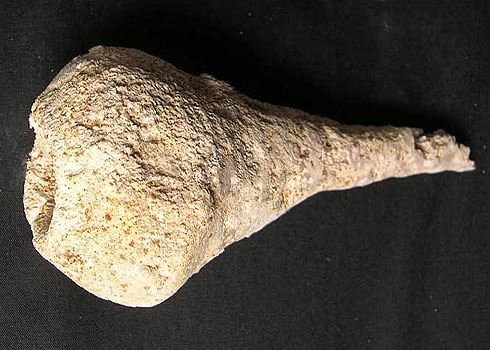Siphonia koenigi
Siphonia koenigi is named in honour of Charles Dietrich Eberhard Koenig who was Keeper in the Department of Natural History at the British Museum 1813–1851. He died on 29 August, 1851.
This sponge is often found as a fossil in the Chalk of England - a stratigraphical unit. Most specimens are preserved in flint nodules, making them one of the most common fossils found in southern England.
They are usually pear-shaped, and the preserved canal system is what many people find fascinating.
Species detail
-

Taxonomy and biology
This sponge fed by pumping water through internal canals and chambers inside its pear-shaped body. Find out more, including what gave Siphonia koenigi its shape.
-

Distribution and conservation
Siphonia koenigi lived in deep seas over 120 million years ago. Fossilised Siphonia koenigi is now commonly found in the chalk cliffs on the south coast of England.
Images

Siphonia koenigi.
© Natural History Museum, London
Siphonia koenigi.
© R U Smith
Charles Konig (1774–1851)
© Natural History Museum, LondonAbout the author

Dr Martin Munt
Collections manager in the Invertebrates and Plants Division, Earth Sciences department.
Toolbox
References
Smith, A B and Batten, D J 2002. Fossils of the Chalk. Palaeontological Association Field Guide to Fossils. The Palaeontological Association. London. 374pp.
